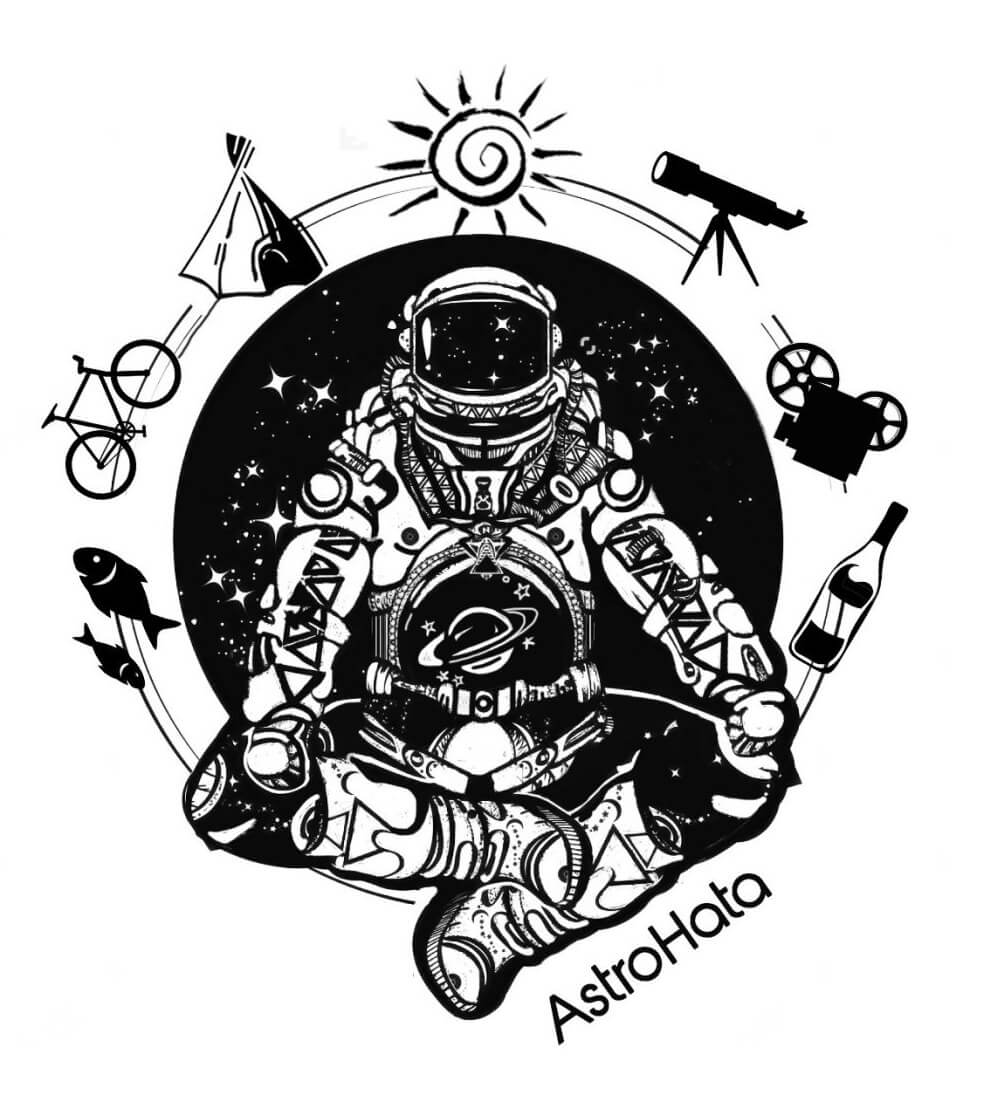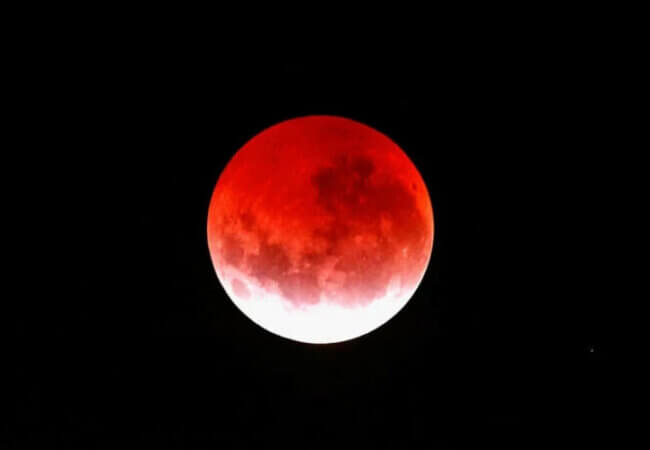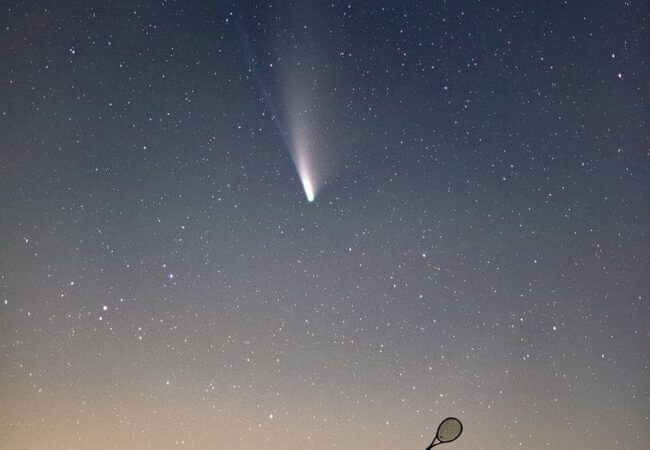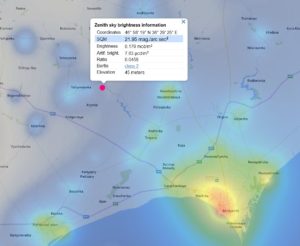Good news for Ukrainian night sky watchers: the phenomenon will be visible throughout our country, and you will have time to enjoy it before the curfew begins. 23:55 – end of the penumbral phase. During the full phase, the Moon will take on a deep copper-red color...
Continue readingNews
Betelgeuse has always excited my imagination. I thought it had already exploded and clumps of its matter were drifting through space. But it turns out Betelgeuse simply has a blue companion that can affect the six-year cycle of brightness changes of the red star. The companion star was first discovered in 2024 after several years of observations. However, it was only now that photographs were obtained....
Continue readingThe photograph (taken with the LASCO telescopes on May 24, 2025) shows a spectacular coronal mass ejection, or prominence, that looks like a bird flying away from the Sun. The bird is 10 times larger than Earth. It is relatively cold solar material ejected into the magnetosphere of our star and continues to move toward the outer edges of the solar system. Beautiful and majestic. #Astrohata...
Continue readingOn March 29, a solar eclipse will be visible in Ukraine from 10:50 a.m. to 2:43 p.m. Kyiv time. The war is unlikely to end after this, but it will be interesting to watch the astronomical phenomenon....
Continue readingMany astronomers are currently watching the constellation Corona Borealis (CrB) for the long-awaited outburst of the repeating variable star T CrB. When that happens (possibly in the next few weeks), "T Cor Bor" is expected to brighten dramatically, a couple thousand times in a matter of hours. Look just above Arcturus and slightly to the left. If the sky is dark, you'll see a set of stars shaped like a cup without a handle. That's the constellation Corona Borealis, the Northern Crown. Only one of its seven stars is very bright, and it's called Alphekka, which is...
Continue readingStars are giant balls of hot gas composed mainly of hydrogen and helium. And why are they hot and bright? Thanks to nuclear fusion, temperature, pressure and mass are all in a delicate balance up to a certain point. 99% of the mass of our solar system is the Sun. It is not for nothing that our Star has been compared to God since ancient times. And when the first ray of the Sun touches your face in the morning - remember space, #Astrohata and red dry of course)...
Continue reading#Astrokhata about serious things. There is speculation that comet C/2023 A3 will have a brightness of -2.5 to -3 m this October and will actually become the brightest this decade, if it survives its approach to the Sun, of course. So everyone I know and don't know must live to see this event to tell posterity. Look up and under your feet, my dears...
Continue readingIf we wanted to reach the nearest star after the Sun, Proxima Centauri, by car, it would take us about 50 million years at a speed of 100 km/h. From this we can come to an interesting conclusion - the main resource of our life is this TIME and also the mind so as not to waste this time in vain. #Astrokhata is still under occupation, but we hope for the best. www.astrohata.com Our Telegram - https://t.me/astrohatacom Instagram - https://www.instagram.com/astrohata/ #Sun #time #proximacentauri...
Continue readingYou can endlessly look at water and fire, but the most magical thing is open space. At the center of the Heart Nebula (IC 1805) is the star cluster Melotta 15, which illuminates the surrounding gas and dust. In addition, there is also the Soul Nebula (IC 1848). And all this is about 7500 light years away from us in the constellation Cassiopeia. In the heart, the soul is still the astronomers of romance) #Astrokhata is still under occupation, but we hope for the best. www.astrohata.com Our Telegram - https://t.me/astrohatacom Instagram...
Continue readingThe light of the Sun goes to the Earth, breaking the bushes and overcoming the barchans of the internal resistance of our star for 30 thousand years. That is how much time photons need to make their way from the center to the surface of the star. But after that, they need only 8 minutes to touch the Earth and warm the tired hands of the mortar commander with their warmth. The conclusions today are that the light will still overcome the darkness, but it may take a long time... #Astrokhata is still under occupation, but we hope for the best. www.astrohata.com Our...
Continue reading





















